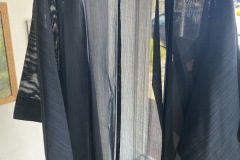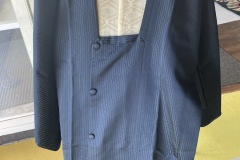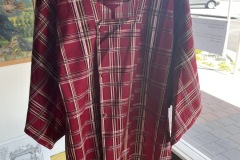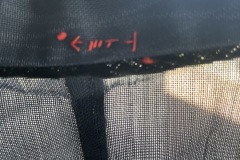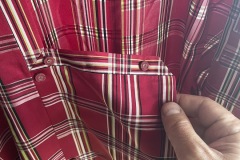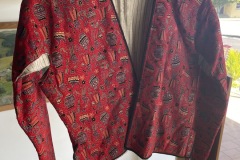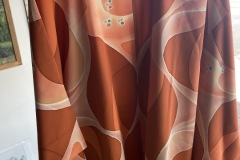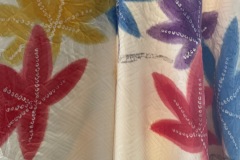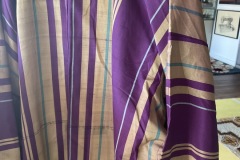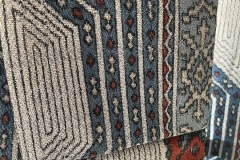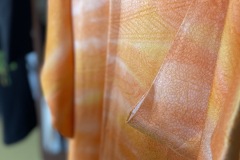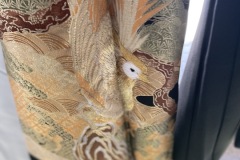The kimono is synonymous with Japanese culture and tradition, having been traditional dress for centuries.
From its creation around the 800’s to modern day the kimono has evolved over time but its style and design have stayed relatively the same. They are worn by everyone – men, women and children – regardless of their economic, marital or societal status. Today, though most people in Japan wear Western dress, kimono are still common at formal and culture events. At summer festivals people often wear a yukata, an informal kimono, made from a single layer of cotton.
Kimono were developed in the Heian period (794 – 1185) and their original use was as undergarments, worn by the nobility. Fabric is cut in straight lines to form rectangles and then sewn together to form the body and sleeves. This design was very flexible as it does not matter what shape the wearer is.
Kimono bodies are rectangular in shape with square sleeves and wrapped around the body from left to right. Deceased people are wrapped in a kimono from right to left. An obi, a broad sash, holds the garments in place and they are worn with sandals (zori) and split-toe socks (tabi). Usually kimono are made from a narrow bolt of cloth (tanmono) from a wide variety of fabrics – silk, linen, hemp, cotton, Chirimen (Japanese crepe), and Rinzu (damask weaves).
Tanmono bolts are sometimes made long enough to be able to include a short matching jacket (haori) which is also popular in Western dress.
A kimono’s design represents a person’s social status, personal identity and cultural sensitivity and can range from plain, dyed or printed fabric to which hand-painted or embroidered designs are added.
Nature is often represented in these designs with the crane being the most popular as it is the symbol for longevity and good fortune. Pine, bamboo and plum are known as the Three Friends of Winter. Pine is an evergreen that lives for many years and bamboo never breaks as it bends in the wind. Plum is often shown on winter kimonos, suggesting that spring is coming soon, as it is the first tree to blossom.
Indigo is used to dye blue kimonos and the colour is thought to repel snakes and insects. Purple comes from the Murasaki plant and has strong poetic significance. Black represents water, north, winter and wisdom. The most common colour is red obtained from safflower (benibana) and often worn by young women as it signifies youthful glamour and allure.
Often a kimono will have a signature sewn to the inside of the garment, where it can’t be seen. A Rakuseikanshiki is an embroidered seal or stamp left by the maker of the garment. It signifies “I created this work of art”.=
Some kimonos are considered important works of art and the making of these kimono is recognised as a traditional craft so they come with a “seal” (certificate) that states its value and quality.
Formal kimonos such as the Tomesode (short sleeved), Irotomesode (women’s with design along the bottom) and Homongi (women’s, made of silk) kimonos are black and often have up to five family crests sewn or dyed on them. The prestige of a kimono is recognised by the number of family crests (kamon) on the kimono, which have been passed down from generation to generation. Men’s black kimono also have these crests and their placement and number varies according to the formality of the costume.
Despite the fact that Western dress has taken over from the formal garments, the kimono style is still seen in much Japanese everyday fashion and the clothing is worn around the world.
Note the straight sleeves and the left to right orientation of the front closure in the garments pictured above.
References:
https://en.wikipedia.org/wiki/Kimono
https://kimurakami.com/blogs/japan-blog/kimono
